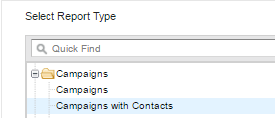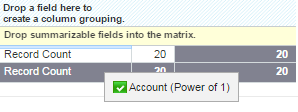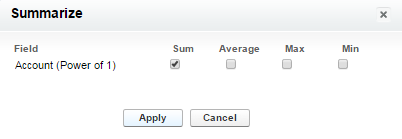The Power of One is a Salesforce custom formula field that is proclaimed to be ‘The greatest formula ever written’, adding an extra boost to your Salesforce analytics.
Words like ‘custom’, ‘formula’, or even ‘field’ can scare us enough to say: “probably not for me’ – but wait! This is what the formula looks like:
That’s all you need to do. No, I’m not kidding. The beauty of this hack is that it’s so simple, yet that single one is powerful in filling a void in analytics functionality.
Here is a quick run-through of how you do it. If you’re already familiar with creating Salesforce fields, this should take you no more than 2 minutes.
NB: if you don’t have access to Setup, it means you do not have administrative privileges in Salesforce. You’ll have to have a conversation with your designated system admin.
- Navigate to setup. Type in Quick Find box: ‘fields’, chose the object (accounts, users, etc.) that you want to use.
- Find Custom fields section. Click new.
- Field type = ‘Formula’
- Output type = ‘Number’; Options (at end of list) Decimal Places = 0
- In the formula box, type: 1
- Save
If you need more detail, you can check out this great entry on the Success Community by Salesforce MVP Steve Mo.
Tip: hide this field from the page view if you don’t want nosy people asking questions.
Behind the scenes, every record in that object (accounts, users, etc.) has now been stamped with a 1. Now I’ll show you how to put Power of One into action in your reporting.
Power of One for Marketers
Marketers are a group of people who need this hack in their lives.
In the past, calculations were done in Excel, or even counted manually from a report page – but not with this fine formula!
Let’s dive into a perfect use case for Power of One, using the formula on the Accounts object.
Power of One: Accounts
The scenario:
In your campaign, you want to show the unique number of accounts that have been ‘touched’ in this campaign, regardless of one, two or more contacts were members of the campaign.
The solution:
You will see this in the screenshot below, where there were 32 contacts (white row) belonging to one account that were part of this huge campaign, yet the Power of One (white row) states ‘1’, representing that one single account.
The Grand Total row will reflect this for the whole table. For this campaign, there were 249 accounts that the 7,968 contacts belong to.
Power of One in Action
Here is where I show you how to insert this into your reports.
- Create a new report. Report type should be Campaigns with Contacts/Campaigns with Leads.
2. When you get to the report builder, select the ‘Matrix’ report format.
3. On the left-hand side (your vertical grouping), drag and drop Account Name (for contacts) or Company (for leads) into the grey area.
4. In the field search bar, search for ‘power’ in order to bring up your Power of One field (unless you called it something quirky, then search by that..)
5. Drag this to the report as shown here:
Be sure that the green tick symbol appears!
6. A window will pop up asking you what summary calculation you want. Choose ‘Sum’.
7. A preview of 20 records will appear. You may be able to see that this has worked, as the example below does. If not, run the report to see the full dataset and see if you have different Grand Total values for Power of One and Record Count.
Hope you found this helpful – go ahead and share any other great use cases for Power of One!







